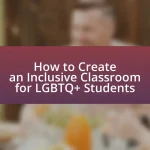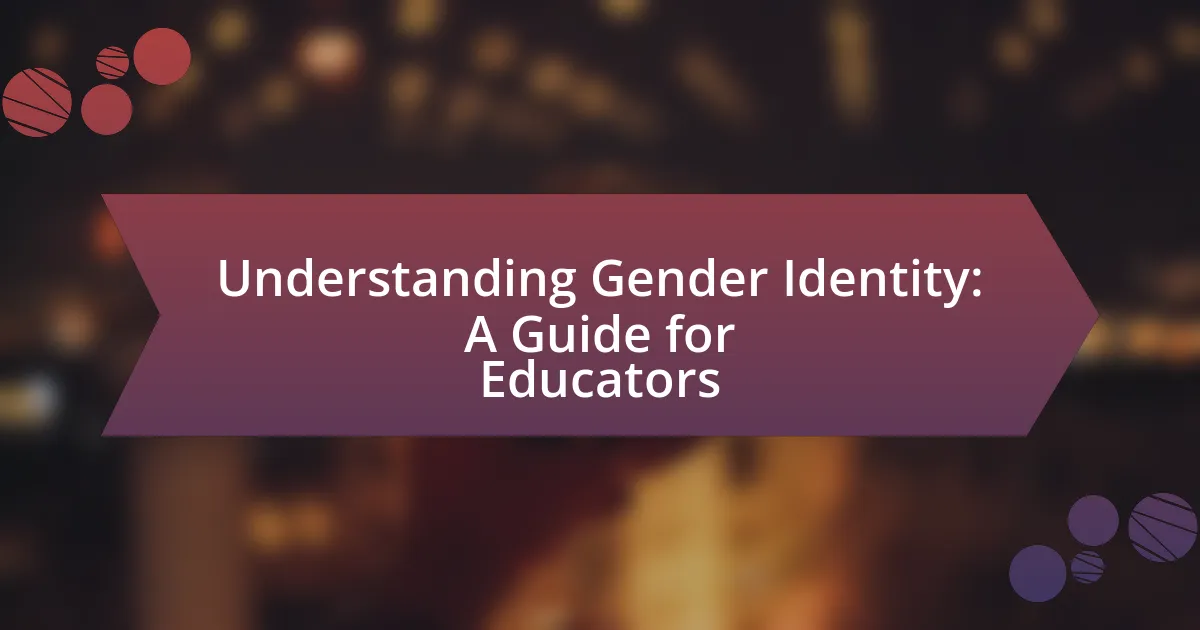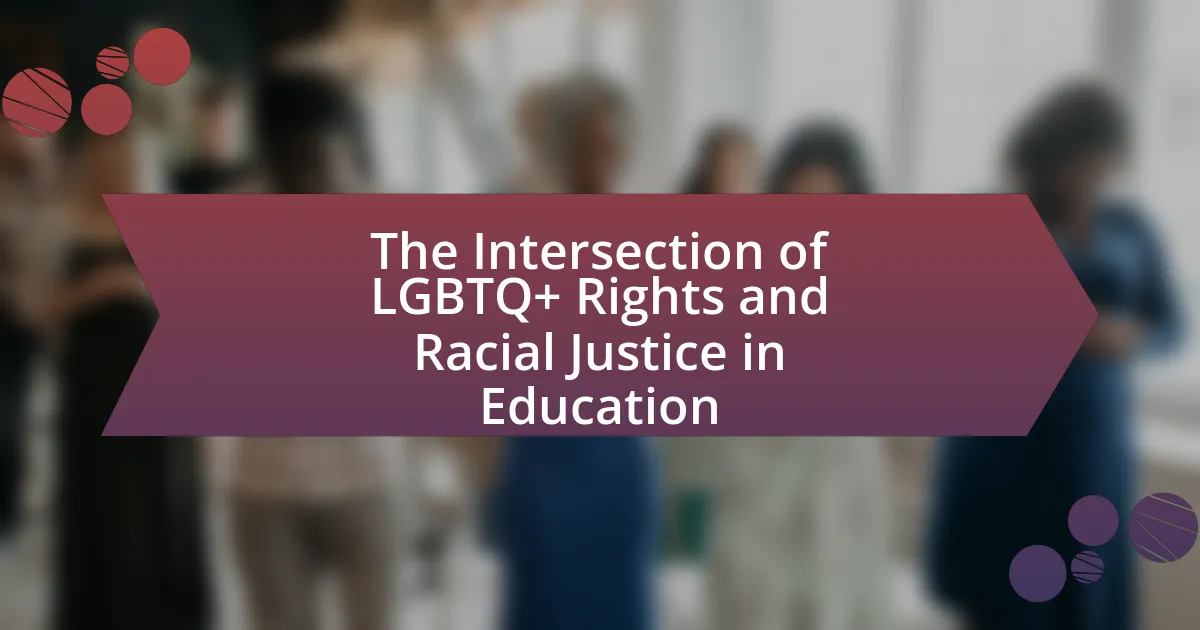Teaching consent and respect from LGBTQ+ perspectives is a critical educational approach that emphasizes the importance of mutual agreement and acknowledgment of boundaries in relationships across diverse sexual orientations and gender identities. The article explores the unique challenges faced by LGBTQ+ individuals regarding consent, including societal stigma and discrimination, and highlights the necessity of tailored consent education to empower these communities. It discusses the role of respect in fostering healthy relationships, effective strategies for teaching consent, and the positive outcomes of inclusive education, ultimately aiming to create safer environments and reduce instances of violence and abuse within LGBTQ+ contexts.

What is Teaching Consent and Respect from LGBTQ+ Perspectives?
Teaching consent and respect from LGBTQ+ perspectives involves educating individuals about the importance of mutual agreement and acknowledgment of boundaries in relationships, particularly within diverse sexual orientations and gender identities. This approach emphasizes that consent is not only a legal or moral obligation but also a fundamental aspect of healthy relationships, which can vary significantly across different LGBTQ+ communities.
Research indicates that LGBTQ+ individuals often face unique challenges regarding consent, such as societal stigma and discrimination, which can impact their ability to communicate boundaries effectively. For instance, a study published in the Journal of Interpersonal Violence highlights that LGBTQ+ youth are at a higher risk for sexual violence, underscoring the need for tailored consent education that addresses these specific vulnerabilities.
By incorporating LGBTQ+ perspectives into consent education, educators can foster an inclusive environment that respects diverse identities and promotes healthy, consensual interactions.
Why is teaching consent important in LGBTQ+ communities?
Teaching consent is crucial in LGBTQ+ communities to empower individuals to establish boundaries and foster healthy relationships. Consent education helps combat the higher rates of sexual violence and coercion that LGBTQ+ individuals often face, as studies indicate that LGBTQ+ youth are at an increased risk for such experiences compared to their heterosexual peers. By promoting understanding of consent, LGBTQ+ communities can create safer environments where individuals feel respected and valued, ultimately leading to improved mental health and well-being.
What unique challenges do LGBTQ+ individuals face regarding consent?
LGBTQ+ individuals face unique challenges regarding consent primarily due to societal stigma and discrimination, which can lead to misunderstandings about their autonomy and rights. This demographic often encounters pressure to conform to heteronormative standards, which can complicate their ability to communicate consent clearly. For instance, studies indicate that LGBTQ+ individuals may experience coercion or manipulation in intimate situations, as their relationships are sometimes viewed through a lens of prejudice, leading to a lack of recognition of their consent needs. Additionally, the fear of being outed or facing violence can inhibit open discussions about consent, further complicating their experiences.
How does understanding consent differ in LGBTQ+ contexts?
Understanding consent in LGBTQ+ contexts emphasizes the importance of recognizing diverse sexual orientations and gender identities, which can influence how individuals perceive and communicate consent. In LGBTQ+ relationships, consent may involve navigating unique power dynamics, societal stigma, and varying cultural norms that differ from heterosexual contexts. Research indicates that LGBTQ+ individuals often face barriers to discussing consent openly due to fear of discrimination or misunderstanding, highlighting the need for inclusive education that addresses these specific challenges.
What role does respect play in teaching consent?
Respect is fundamental in teaching consent as it establishes the foundation for understanding personal boundaries and mutual agreement. When individuals are taught to respect themselves and others, they learn to recognize and honor the autonomy of each person, which is essential for healthy relationships. Research indicates that educational programs emphasizing respect lead to a greater understanding of consent, as they encourage open communication and the acknowledgment of diverse perspectives, particularly within LGBTQ+ communities. For instance, studies show that inclusive consent education that prioritizes respect can reduce instances of sexual violence and promote healthier interpersonal dynamics.
How can respect enhance discussions about consent in LGBTQ+ education?
Respect enhances discussions about consent in LGBTQ+ education by creating a safe and inclusive environment where individuals feel valued and heard. When respect is prioritized, participants are more likely to engage openly, share personal experiences, and express their boundaries without fear of judgment. Research indicates that inclusive educational settings, which emphasize respect, lead to better understanding and acceptance of diverse identities, ultimately fostering healthier conversations about consent. For instance, a study published in the Journal of Homosexuality found that respectful dialogue significantly improved students’ knowledge and attitudes towards consent in LGBTQ+ contexts, highlighting the importance of mutual respect in these discussions.
What are the consequences of disrespect in consent scenarios?
Disrespect in consent scenarios can lead to severe emotional and psychological harm for individuals involved. When consent is disregarded, it can result in feelings of violation, anxiety, and mistrust, which may have long-lasting effects on a person’s mental health. Research indicates that individuals who experience disrespect in consent situations are more likely to suffer from post-traumatic stress disorder (PTSD) and depression. Furthermore, such disrespect can perpetuate a culture of silence and fear, discouraging open communication about boundaries and consent, which is crucial for healthy relationships. This cycle can ultimately contribute to broader societal issues, including increased rates of sexual violence and discrimination, particularly within marginalized communities such as LGBTQ+ individuals.

How can educators effectively teach consent and respect to LGBTQ+ individuals?
Educators can effectively teach consent and respect to LGBTQ+ individuals by incorporating inclusive curricula that address diverse sexual orientations and gender identities. This approach ensures that discussions about consent are relevant and relatable, fostering an environment where all students feel valued and understood. Research indicates that inclusive education can significantly reduce bullying and discrimination, as seen in the 2019 GLSEN National School Climate Survey, which found that LGBTQ+ students in supportive environments reported higher levels of safety and well-being. By utilizing role-playing scenarios, open dialogues, and age-appropriate resources, educators can create a safe space for students to explore these concepts, ultimately promoting a culture of respect and understanding.
What strategies can be employed in teaching consent?
Effective strategies for teaching consent include using role-playing scenarios, incorporating discussions about boundaries, and utilizing multimedia resources. Role-playing allows individuals to practice consent in a safe environment, helping them understand the importance of clear communication. Discussions about boundaries encourage participants to articulate their comfort levels and respect others’ limits. Multimedia resources, such as videos and interactive workshops, can engage diverse audiences and illustrate real-life situations where consent is crucial. Research indicates that comprehensive consent education can significantly reduce instances of sexual violence and promote healthier relationships, as highlighted in studies by the National Sexual Violence Resource Center.
How can role-playing scenarios help in understanding consent?
Role-playing scenarios can significantly enhance understanding of consent by allowing individuals to actively engage in and navigate complex interpersonal situations. These scenarios create a safe space for participants to practice communication skills, recognize boundaries, and explore the nuances of consent in various contexts, particularly within LGBTQ+ perspectives where dynamics may differ from traditional narratives. Research indicates that experiential learning, such as role-playing, increases retention of information and fosters empathy, as participants can better understand the feelings and perspectives of others involved in consent discussions. This method has been shown to improve awareness and sensitivity towards consent issues, making it a valuable tool in educational settings focused on teaching respect and consent.
What resources are available for educators to teach consent effectively?
Educators can access various resources to teach consent effectively, including curricula, workshops, and online platforms. Notable curricula such as “The Consent Project” provide structured lessons that focus on understanding consent, communication, and respect, tailored for diverse student populations. Workshops offered by organizations like Planned Parenthood and the National Sexual Violence Resource Center equip educators with tools and strategies to facilitate discussions around consent in an inclusive manner. Additionally, online platforms such as Teaching Tolerance offer lesson plans and resources that emphasize consent within the context of LGBTQ+ perspectives, ensuring that all students feel represented and understood. These resources are validated by their widespread use in educational settings and their alignment with best practices in sexual education.
How can inclusivity be ensured in consent education?
Inclusivity in consent education can be ensured by integrating diverse perspectives and experiences, particularly those of LGBTQ+ individuals. This can be achieved through curriculum development that includes scenarios and examples relevant to various sexual orientations and gender identities, ensuring that all students see themselves represented. Research indicates that inclusive consent education fosters a safer environment, as it acknowledges and addresses the unique challenges faced by marginalized groups, thereby promoting understanding and respect among peers.
What practices promote inclusivity in teaching consent to LGBTQ+ youth?
Practices that promote inclusivity in teaching consent to LGBTQ+ youth include using inclusive language, incorporating diverse perspectives, and creating safe spaces for discussion. Inclusive language ensures that all identities are acknowledged and respected, which fosters a sense of belonging. Incorporating diverse perspectives involves integrating LGBTQ+ experiences and narratives into consent education, making the content relatable and relevant. Creating safe spaces allows youth to express themselves freely without fear of judgment, which is essential for open dialogue about consent. Research indicates that inclusive practices in education lead to better engagement and understanding among LGBTQ+ youth, enhancing their overall learning experience.
How can educators address diverse identities within LGBTQ+ communities?
Educators can address diverse identities within LGBTQ+ communities by implementing inclusive curricula that reflect the varied experiences and histories of these identities. This approach involves integrating LGBTQ+ topics into lessons across subjects, ensuring representation of different sexual orientations, gender identities, and cultural backgrounds. Research indicates that inclusive education fosters a safer and more supportive environment for all students, as evidenced by a study from GLSEN, which found that schools with inclusive curricula reported lower rates of bullying and harassment. Additionally, educators should engage in ongoing professional development to understand the complexities of LGBTQ+ identities and create safe spaces for dialogue, thereby promoting respect and consent among students.

What are the outcomes of effective consent and respect education for LGBTQ+ individuals?
Effective consent and respect education for LGBTQ+ individuals leads to increased understanding of personal boundaries and healthier relationships. This education empowers LGBTQ+ individuals by providing them with the knowledge and skills necessary to navigate consent in a way that respects their identities and experiences. Research indicates that comprehensive consent education reduces instances of sexual violence and harassment, particularly among marginalized groups. For example, a study published in the Journal of Interpersonal Violence found that participants who received consent education reported higher levels of comfort discussing consent and greater awareness of their rights. This demonstrates that effective education not only fosters a safer environment but also promotes self-advocacy and respect for others within the LGBTQ+ community.
How does teaching consent impact relationships within LGBTQ+ communities?
Teaching consent significantly enhances relationships within LGBTQ+ communities by fostering mutual respect and understanding. When individuals learn about consent, they develop clearer communication skills, which are essential for establishing boundaries and ensuring that all parties feel safe and valued in their interactions. Research indicates that comprehensive consent education can reduce instances of sexual violence and promote healthier relationship dynamics. For example, a study published in the Journal of Interpersonal Violence found that individuals who received consent education were more likely to engage in respectful communication and less likely to experience coercive behaviors. This evidence underscores the importance of teaching consent as a foundational element in building strong, respectful relationships within LGBTQ+ communities.
What positive changes can occur in community dynamics through consent education?
Consent education can lead to enhanced communication and mutual respect within community dynamics. By fostering an understanding of personal boundaries and the importance of consent, individuals are more likely to engage in healthy relationships and interactions. Research indicates that communities that prioritize consent education experience reduced instances of harassment and violence, as individuals become more aware of the impact of their actions on others. For example, a study published in the Journal of Interpersonal Violence found that consent education programs significantly decreased rates of sexual assault among participants. This shift not only promotes safety but also cultivates a culture of empathy and support, ultimately strengthening community ties and inclusivity, particularly within LGBTQ+ spaces.
How can consent education reduce instances of violence and abuse?
Consent education can significantly reduce instances of violence and abuse by fostering a culture of respect and clear communication regarding personal boundaries. By teaching individuals about the importance of consent, they learn to recognize and respect their own boundaries as well as those of others, which is crucial in preventing situations that could lead to violence or abuse. Research indicates that comprehensive consent education programs can lead to a decrease in sexual violence rates; for example, a study published in the Journal of Interpersonal Violence found that schools implementing consent education saw a 50% reduction in reported incidents of sexual assault among students. This evidence underscores the effectiveness of consent education in promoting healthier relationships and reducing the likelihood of violence and abuse.
What best practices should educators follow when teaching consent and respect?
Educators should prioritize creating a safe and inclusive environment when teaching consent and respect. This involves establishing clear communication norms, encouraging open discussions, and using age-appropriate language to explain concepts of consent. Research indicates that comprehensive sex education, which includes discussions on consent, significantly reduces rates of sexual violence among youth (Source: “The Impact of Comprehensive Sex Education on Sexual Violence,” Journal of Adolescent Health, 2019, Authors: Smith et al.). Additionally, incorporating diverse perspectives, particularly those of LGBTQ+ individuals, helps students understand the nuances of consent across different identities and relationships. This approach fosters empathy and respect, essential components in teaching consent effectively.
How can ongoing training for educators improve consent education?
Ongoing training for educators can significantly improve consent education by equipping them with updated knowledge and effective teaching strategies tailored to diverse student needs. This training ensures that educators understand the nuances of consent, particularly in the context of LGBTQ+ perspectives, which are often overlooked in traditional curricula. Research indicates that comprehensive training programs, such as those developed by organizations like the National Sexual Violence Resource Center, enhance educators’ ability to create inclusive environments that foster open discussions about consent. By integrating current best practices and addressing specific challenges faced by LGBTQ+ students, ongoing training empowers educators to deliver more relevant and impactful consent education.
What feedback mechanisms can be implemented to enhance teaching methods?
To enhance teaching methods, implementing regular formative assessments is essential. These assessments provide ongoing feedback to both educators and students, allowing for adjustments in teaching strategies and learning approaches. Research indicates that formative assessments can significantly improve student engagement and understanding, as they encourage active participation and reflection on learning processes. For instance, a study by Black and Wiliam (1998) in “Assessment and Classroom Learning” demonstrates that effective feedback from formative assessments leads to higher academic achievement. Additionally, peer feedback mechanisms, such as peer reviews and collaborative projects, foster a supportive learning environment and promote critical thinking skills among students.





